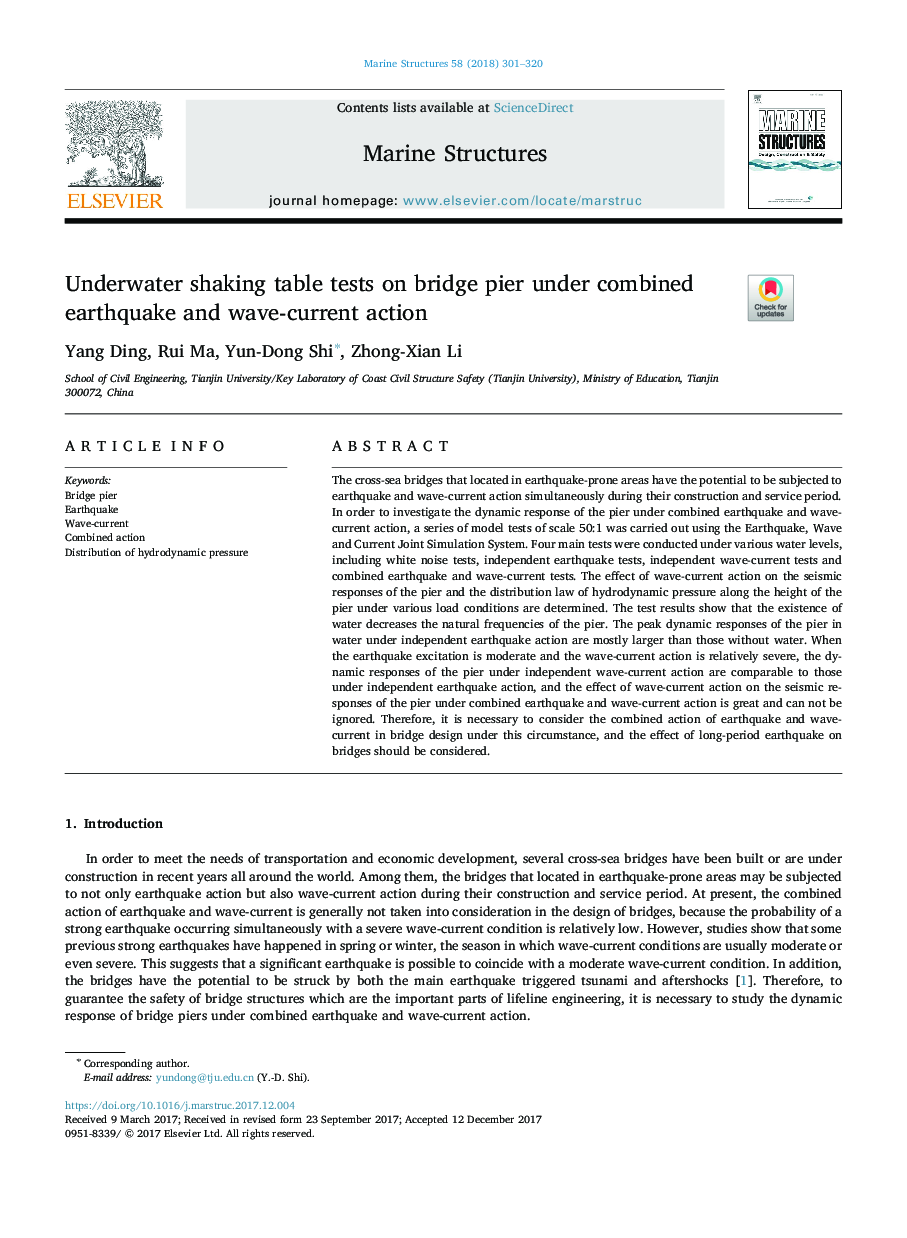| Article ID | Journal | Published Year | Pages | File Type |
|---|---|---|---|---|
| 6758062 | Marine Structures | 2018 | 20 Pages |
Abstract
The cross-sea bridges that located in earthquake-prone areas have the potential to be subjected to earthquake and wave-current action simultaneously during their construction and service period. In order to investigate the dynamic response of the pier under combined earthquake and wave-current action, a series of model tests of scale 50:1 was carried out using the Earthquake, Wave and Current Joint Simulation System. Four main tests were conducted under various water levels, including white noise tests, independent earthquake tests, independent wave-current tests and combined earthquake and wave-current tests. The effect of wave-current action on the seismic responses of the pier and the distribution law of hydrodynamic pressure along the height of the pier under various load conditions are determined. The test results show that the existence of water decreases the natural frequencies of the pier. The peak dynamic responses of the pier in water under independent earthquake action are mostly larger than those without water. When the earthquake excitation is moderate and the wave-current action is relatively severe, the dynamic responses of the pier under independent wave-current action are comparable to those under independent earthquake action, and the effect of wave-current action on the seismic responses of the pier under combined earthquake and wave-current action is great and can not be ignored. Therefore, it is necessary to consider the combined action of earthquake and wave-current in bridge design under this circumstance, and the effect of long-period earthquake on bridges should be considered.
Related Topics
Physical Sciences and Engineering
Engineering
Civil and Structural Engineering
Authors
Yang Ding, Rui Ma, Yun-Dong Shi, Zhong-Xian Li,
